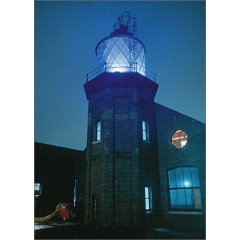when i was growing up they started issuing LP albums which played at 33 1/3 rpm, vastly increasing the amount of playing time on one side of a record. before the LP, audio was recorded and distributed on brittle discs made of shellac, running at 78rpm. 78s had a capacity of about 12 minutes; LPs upped that to about 30 minutes which made it possible for classical music fans to listen to an entire movement without changing discs and enabled  the development of the rock and roll album.
the development of the rock and roll album.
in 2,000 Jem Finer, a UK-based artist released Longplayer, a 1000-year musical composition that runs continuously and without repetition from its start on January 1, 2000 until its completion on December 31, 2999. Related conceptually to the Long Now project which seeks to build a ten-thousand year clock, Longplayer uses generative forms of music to make a piece that plays for ten to twelve human lifetimes. Longplayer challenges us to take a longer view which takes account of the generations that will come after us.
the longplayer also reminds me of an idea i’ve been intrigued by — the possiblity of (networked) books that never end because authors keep adding layers, tangents and new chapters.
Finer published a book about Longplayer which includes a vinyl disc (LP actually) with samples.
if:book
A Project of the Institute for the Future of the Book

see also: 9 Beet Stretch, a recording of Beethoven’s Ninth Symphony stretched to 24 hours. hmmm, looks like Table of the Elements is releasing a DVD version of that. Erik Satie’s Vexations, a short piece presented with the instructions that it should be repeated 840 times, presages this, as does some of the work of John Cage & his Fluxus followers . . .
There are many fascinating things about Longplayer. And they seem to go from future to present to past. The future is obviously the fact that as a composition it has been conceived to play, without repetition, until December 31st, 2999, when it will complete its cycle and could then, begin again. Talk about the Platonic year! The present is that it is playing now, as its original incarnation, a computer program, at Trinity Buoy Wharf in London, Bibliotheca Alexandria in Egypt, the Powerhouse in Brisbane, Australia, and Rifford Park, near Nottingham in England, but it can also be heard globally via a live stream on the Internet. The past is that in order to ensure its continuity, there is the need for a score that humans can play, as any other past composition that has survived thanks to having been notated. Jem Finer says, “if Longplayer is to survive then people have to want it to. So ultimately the best strategy might be for humans to play it -as long as they are around. I’ve written the score for Longplayer – for six people and 250 Tibetan singing bowls.” His score is a beautiful circular one, that Borges would have loved to conceive.
How to make it sustainable is the challenge: A small device whose only function will be to play Longplayer, small and cheap, so it can be made by the thousands. A mechanical device based on the”>http://longplayer.org/lp_new_site/what/what.html”>the record player analogy, the Longplayer takes an existing recorded piece of music and uses it as source material, simultaneously playing 6 sections taken from it, each at a slightly different position and each at a different pitch. It’s exactly the same principle as taking six copies of a record and playing them on six turntables, each one rotating at a different speed. This idea seduces me because it is like the carillons in a church that have been playing for centuries.
There is also a Longpayer Remix Project in which musicians and artists have been given 10 minute segments of Longplayer to use as raw material in any way they wish. This, in itself is a way to maintain its continuity.
What a wonderful combination of multiple approaches to music and art that transcends time in so many levels.